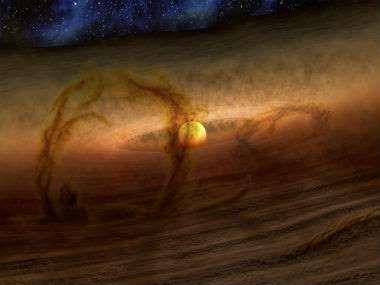January 8, 2014
Miami: NASA is closer than ever to finding a twin for the Earth, astronomers said today, announcing the discovery of eight new planets that circle in the habitable zones of their stars.

January 8, 2014
Miami: NASA is closer than ever to finding a twin for the Earth, astronomers said today, announcing the discovery of eight new planets that circle in the habitable zones of their stars.

Two of the eight are the most Earth-like of any known planets found so far outside our solar system, astronomers told the 225th meeting of the American Astronomical Society in Seattle, Washington.
The pair are likely to have hard, rocky surfaces in addition to being an orbiting distance from their stars that is neither too hot nor too cold for water and possibly life to exist, astronomers said. The discovery doubles the number of known planets that are close in size to the Earth and believed to be in the so-called "Goldilocks zone" of the stars they orbit.
"We are now closer than we have ever been to finding a twin for the Earth around another star," said Fergal Mullally of the Kepler Science Office. "These candidates represent the closest analogs to the Earth's own system found to date."
The worlds were found with the help of NASA's planet-hunting Kepler mission, a space telescope which has scoured more than 150,000 stars for planets beyond our solar system since its launch in 2009. The latest trove of candidate planets found by Kepler and announced today was 554, bringing the total potential planets to 4,175.
Scientists have recently verified the existence of the 1,000th planet found by Kepler.
"Three of the newly validated planets are located in their distant suns' habitable zone, the range of distances from the host star where liquid water might exist on the surface of an orbiting planet," NASA said in a statement. "Of the three, two are likely made of rock, like Earth."
While it is intriguing to consider the possibility of life existing on another planet like ours, the two best candidates are so far away that learning more about them presents a big challenge.
Courtesy: AFP
















































































































